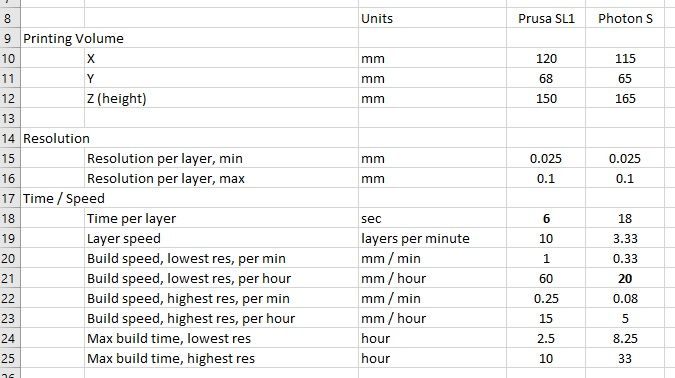With 3d printing, one process is great for one preferred outcome, another for another.
FDM (Fused Deposition Modeling) is great for larger parts requiring lower fidelity and cost, and this is what most home-use 3d printers are. I have one, and have had good success while it was still working. Some people call it the “toothpaste printer,” because it’s laying down a tiny extrusion of melted plastic wherever the print head moves.
SLS (Selective Laser Sintering) fuses a layer of particles in a big tub, one layer at a time, resulting in a hard part in the middle of a lot of powder. This requires no supports. Shapeways is great for this; they know how to nest parts from various customers, print the big group, and clean up the big mess of leftover powder. This process isn’t really appropriate for home use, but Shapeways has made it accessible to us.
SLA (Stereolithography) is totally different. UV light precisely cures, layer by layer, a liquid resin. Very high resolution. And until recently, the process was nowhere near the realm of home use. Formlabs is a foremost example, but by the time you buy all their stuff you’re into multiple $K.
I learned from a friend last weekend that he was SLA printing, with a printer that cost less than $300. I didn’t believe it, even though I saw the nice parts he got out of it. But now I believe it. Several Chinese manufacturers are offering these printers, a prominent one being Anycubic Photon; and this is what he is using [link].
Recently, Anycubic has upgraded their SLA printer, and this is the one I’m considering [link].
Since this SLA printer would be for small / precise parts. I’ll still have a need for larger / structural parts requiring less detail. So I’ll be needing a new FDM printer, such as a Prusa, as reported by Joe, or the Anycubic versions.
Between those two kinds of printers (and it’ll be a while until I obtain them), I’m hoping to get away from the high cost, long lead time, and shipping cost/time required with SLS/Shapeways.
I’m not a pro, so take all this for what it’s worth. I do want to reinforce Joe Z’s point though, in that these technologies are becoming increasingly affordable for “the masses,” even high-res SLA.
===>Cliffy

